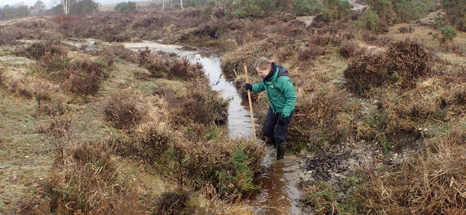 Monitoring of a conservation scheme in the New Forest has been increased to extend its benefits for rare species and habitats.
Monitoring of a conservation scheme in the New Forest has been increased to extend its benefits for rare species and habitats.
The New Forest Higher Level Stewardship (HLS) Scheme is the largest environmental improvement scheme in England and is restoring internationally-important New Forest habitats.
So far, the scheme has returned more than nine miles of streams to their natural meandering routes, protecting the New Forest’s internationally-important wetlands by slowing water flow.
The project aims to increase the New Forest’s resilience in the face of modern day pressures, such as population growth and increased visitor numbers. It is a rare opportunity to conserve fragile habitats and support commoners on such a large scale
The project is now expanding its monitoring work to gather an even greater range of scientifically robust evidence concerning the effectiveness of its various restoration techniques. The work will shed more light on the environmental benefits of the scheme and any improvements that could be made in the future.
The 10-year HLS agreement with Natural England is held by the Verderers of the New Forest. The scheme is managed by them in partnership with the Forestry Commission and the New Forest National Park Authority.
The scheme has appointed a new Monitoring Officer, who will spearhead scientific studies to assess the impact of the scheme’s wetland restoration on:
- How streams connect with their surrounding habitats to increase biodiversity
- Detailed botanical surveys to find rare plants in bogs and mires
- Freshwater invertebrates, through a volunteer monitoring project
- Fish population and spawning habitats, including brown trout, eels and Brook Lamprey
Wetland restoration in the New Forest seeks to reverse the damaging impacts of artificial straightening of streams since the Victorian era. This straightening can cause bogs to dry out, stream banks to erode and may increase the risk of flooding downstream.
Gemma Stride, HLS Monitoring Officer, said: “I am passionate about connecting people to the landscape and sharing the magic of the natural environment with others. I hope this role will allow me to do this and show people the real benefits brought by wetland and wider habitat restoration.
“The New Forest is an enchanting and special place that needs our protection in the face of unprecedented modern day pressures. This monitoring work will help us to show how habitat restoration is making the Forest more resilient to cope with these pressures.
“I’m excited to get to grips with what surveys and monitoring are telling us about our work to protect the National Park.”